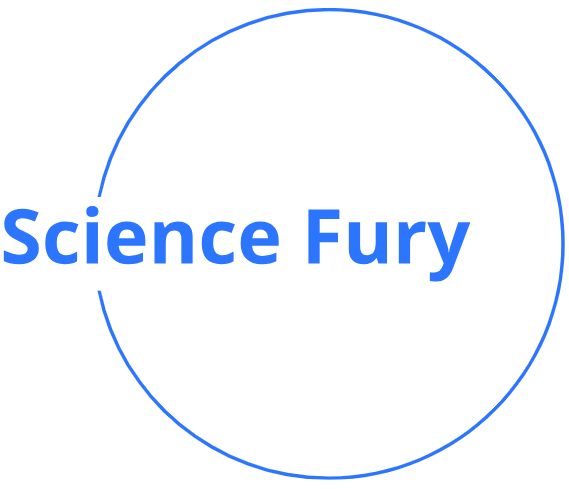Disease X. It’s a name that sends shivers down the spines of healthcare professionals and public health officials worldwide. Not because it’s a specific illness, but because it represents the chilling unknown – a hypothetical, highly contagious, and potentially deadly pathogen waiting to unleash its wrath on humanity. While this may sound like a plot from a dystopian movie, Disease X is very real, and preparing for its emergence is a global priority.
Deciphering the Enigma: What is Disease X?

Coined by the World Health Organization (WHO) in 2018, Disease X isn’t a specific virus or bacteria. It’s a placeholder, a chilling symbol for an unknown pathogen with the potential to cause a severe epidemic or pandemic. This pathogen could be a completely new virus, a known virus with mutated capabilities, or even a combination of different infectious agents. The defining characteristic of Disease X is its ability to:
- Spread easily from person to person: High transmissibility is crucial for a pathogen to reach pandemic proportions.
- Cause severe illness and death: Disease X may have a high mortality rate, leading to significant casualties.
- Lack existing countermeasures: No vaccines, treatments, or diagnostic tools may be available, making containment and mitigation extremely challenging.
Case Studies: Lessons from Past Outbreaks
Understanding Disease X requires learning from past outbreaks:
- SARS (2003): This novel coronavirus emerged in China, causing severe respiratory illness in over 8,000 people and claiming nearly 800 lives. The lack of prior exposure and knowledge hampered early response efforts, highlighting the need for broad-spectrum preparedness.
- Ebola (2014-2016): This West African outbreak of the Ebola virus disease (EVD) resulted in over 11,000 deaths. Although a vaccine became available later, initial delays highlighted the critical need for rapid development and deployment of countermeasures.
- COVID-19 (2019-present): The ongoing pandemic caused by the SARS-CoV-2 virus serves as a stark reminder of the devastating impact of a highly contagious and novel pathogen. The initial lack of knowledge, vaccines, and treatments underscores the importance of research and preparedness against unknown threats.
These outbreaks reveal the unpredictable nature of emerging infectious diseases and the crucial role of proactive measures. Disease X may be unknown, but we can prepare for its arrival.
Preparing for the Unforeseen: Actionable Tips
While predicting the specific characteristics of Disease X is impossible, there are steps we can take to mitigate its impact:

- Investing in R&D: Funding research into emerging infectious diseases, broad-spectrum vaccines and therapeutics, and rapid diagnostic tools is crucial.
- Strengthening surveillance: Robust global surveillance systems can detect outbreaks early and facilitate quick response measures.
- Public health preparedness: Building strong healthcare systems, training healthcare workers, and educating the public about hygiene and zoonotic diseases are essential.
- International collaboration: Global cooperation on research, resource sharing, and coordinated response strategies is vital for effective pandemic control.
Individuals can also take action:
- Maintain good hygiene: Frequent handwashing and respiratory etiquette can help prevent the spread of any infectious disease.
- Stay informed: Follow reliable sources for updates on emerging infectious diseases and recommended precautions.
- Advocate for preparedness: Support initiatives that strengthen public health systems and research into pandemic threats.
Beyond the Basics: Exploring Advanced Topics
While many articles discuss the basics of Disease X, several crucial aspects often receive less attention:
- The animal-human interface: Most emerging infectious diseases, including potential Disease X candidates, originate in animals. Understanding zoonotic spillover risks and implementing strategies to prevent animal-human interactions is vital.
- Antimicrobial resistance: The growing threat of drug-resistant pathogens complicates treatment options for any future pandemic, including Disease X. Investing in research and development of new antibiotics and alternative therapies is crucial.
- Misinformation and infodemic control: The rapid spread of misinformation during pandemics can hinder response efforts. Effective communication strategies and public trust in scientific expertise are essential.
- Mental health impacts: Pandemics can have severe mental health consequences. Investing in mental health services and promoting self-care practices is crucial for supporting individuals and communities.
Exploring these often-overlooked areas provides a deeper understanding of the challenges posed by Disease X and the multifaceted approach needed to address them.
Can AI Help Us Protect Against Disease X?
Disease X, the hypothetical unknown pathogen with pandemic potential, keeps scientists and public health officials up at night. While we don’t know what form it will take, one thing is certain: artificial intelligence (AI) will play a crucial role in protecting us.
Here’s how different types of AI can contribute to the fight against Disease X:
1. Early Detection and Outbreak Tracking:
AI-powered surveillance systems: Imagine a network of intelligent sensors analyzing social media posts, news reports, and even satellite imagery to detect early signs of disease outbreaks, even in remote areas.
Epidemic forecasting models: AGI AI can analyze past outbreaks and real-time data to predict the spread of Disease X, helping authorities target interventions and resource allocation.
2. Drug and Vaccine Development:
- Virtual screening of potential drug candidates: AI can sift through millions of molecules to identify promising candidates for antiviral or antibiotic drugs against Disease X, significantly accelerating the development process.
- Personalized medicine: AI can analyze individual genetic and health data to predict how patients might respond to different treatments, allowing for more targeted and effective therapies.
3. Optimizing Public Health Response:
- Resource allocation and logistics: AI can analyze data on healthcare infrastructure, population density, and disease spread to optimize the distribution of medical supplies and personnel during an outbreak.
- Targeted communication and education: Generative AI can personalize messaging and outreach campaigns to different demographics, ensuring accurate and relevant information reaches the right people during a crisis.
4. Supporting Research and Development:
- Natural language processing (NLP): Explainable AI can analyze vast amounts of scientific literature to identify patterns and connections that might lead to new insights into emerging viruses like Disease X.
- Robotic process automation (RPA): AI-powered robots can automate repetitive tasks in labs, freeing up researchers to focus on more complex aspects of disease research.

Challenges and Limitations:
It’s important to remember that AI is a tool, not a silver bullet. There are challenges and limitations to consider:
- Data quality and bias: AI models are only as good as the data they’re trained on. Biased data can lead to biased results, potentially exacerbating existing inequalities in healthcare access.
- Ethical considerations: Issues like privacy, transparency, and accountability need careful consideration when deploying AI in healthcare.
- Explainability and trust: Building trust in AI requires ensuring its decisions are understandable and explainable to both the public and healthcare professionals.
The Road Ahead:
Despite the challenges, the potential of AI in protecting us from Disease X and future pandemics is undeniable. By investing in responsible AI development and ensuring its ethical and equitable use, we can harness this powerful technology to build a more resilient and prepared world.
Remember, Disease X is just a hypothetical scenario, but the threat of emerging infectious diseases is very real. By embracing AI as a valuable tool in our arsenal, we can be better equipped to face whatever challenges the future may hold.
FAQs about Disease X
Is Disease X a real threat? While we don’t know what pathogen it represents, the emergence of novel and dangerous infectious diseases is a real and ongoing threat.
When will Disease X emerge? Predicting the timing is impossible, but continuous surveillance and preparedness are crucial.
How can we stop Disease X? A combined approach involving
- Rapid detection and containment: Early identification and isolation of infected individuals through robust surveillance and effective contact tracing are key to preventing widespread transmission.
- Vaccine and therapeutic development: Investing in research and development of broad-spectrum vaccines and treatments that can work against a wide range of pathogens is crucial.
- Public health measures: Implementing measures like social distancing, mask-wearing, and travel restrictions can slow the spread of the disease and buy time for other interventions.
- International cooperation: Sharing information, resources, and expertise between countries is essential for a coordinated global response.
What role can individuals play?
- Staying informed: Following reliable sources for updates on Disease X and recommended precautions.
- Practicing good hygiene: Regular handwashing, respiratory etiquette, and avoiding close contact with sick individuals can help prevent the spread of any infectious disease.
- Supporting preparedness efforts: Advocating for policies that strengthen public health systems and research into pandemic threats.
- Managing mental health: Taking care of one’s mental well-being and seeking support if needed is crucial during pandemics.
Is there hope for humanity against Disease X?
Despite the unknown nature of Disease X, there is reason for hope. Advancements in science and technology, global collaboration, and increased public awareness of infectious disease threats are powerful tools in our fight against pandemics. While Disease X may pose a significant challenge, our collective preparedness and proactive actions can significantly mitigate its impact on humanity.
Conclusion: Embracing Uncertainty with Preparation
Disease X may be a chilling symbol of the unknown, but it also serves as a powerful reminder of the importance of preparedness. By investing in research, strengthening public health systems, and promoting individual responsibility, we can build a more resilient future where humanity is better equipped to face the challenges of emerging infectious diseases, whatever form they may take. Let us not wait for the storm to arrive; let us build the shelter that ensures our collective survival.
